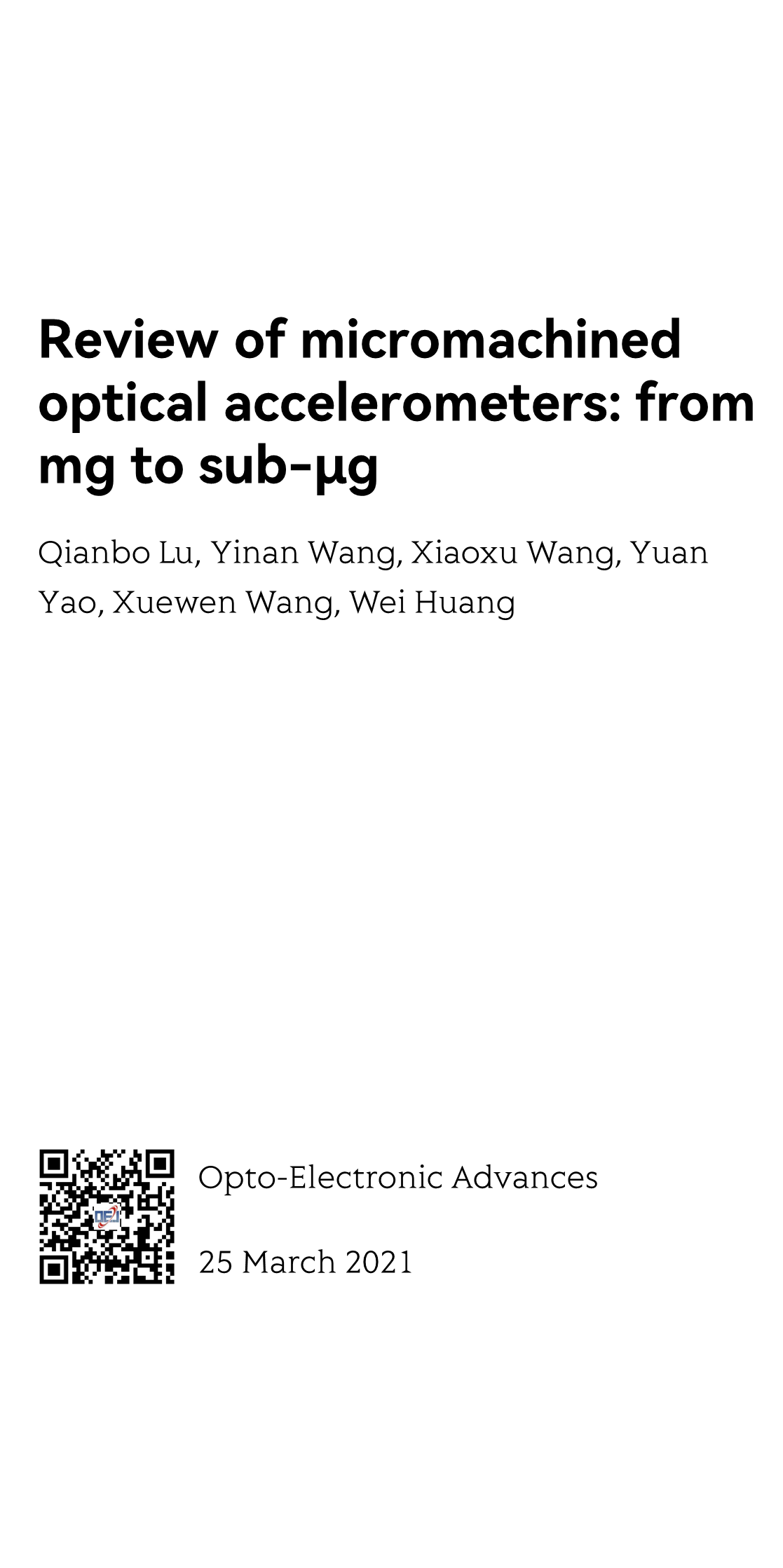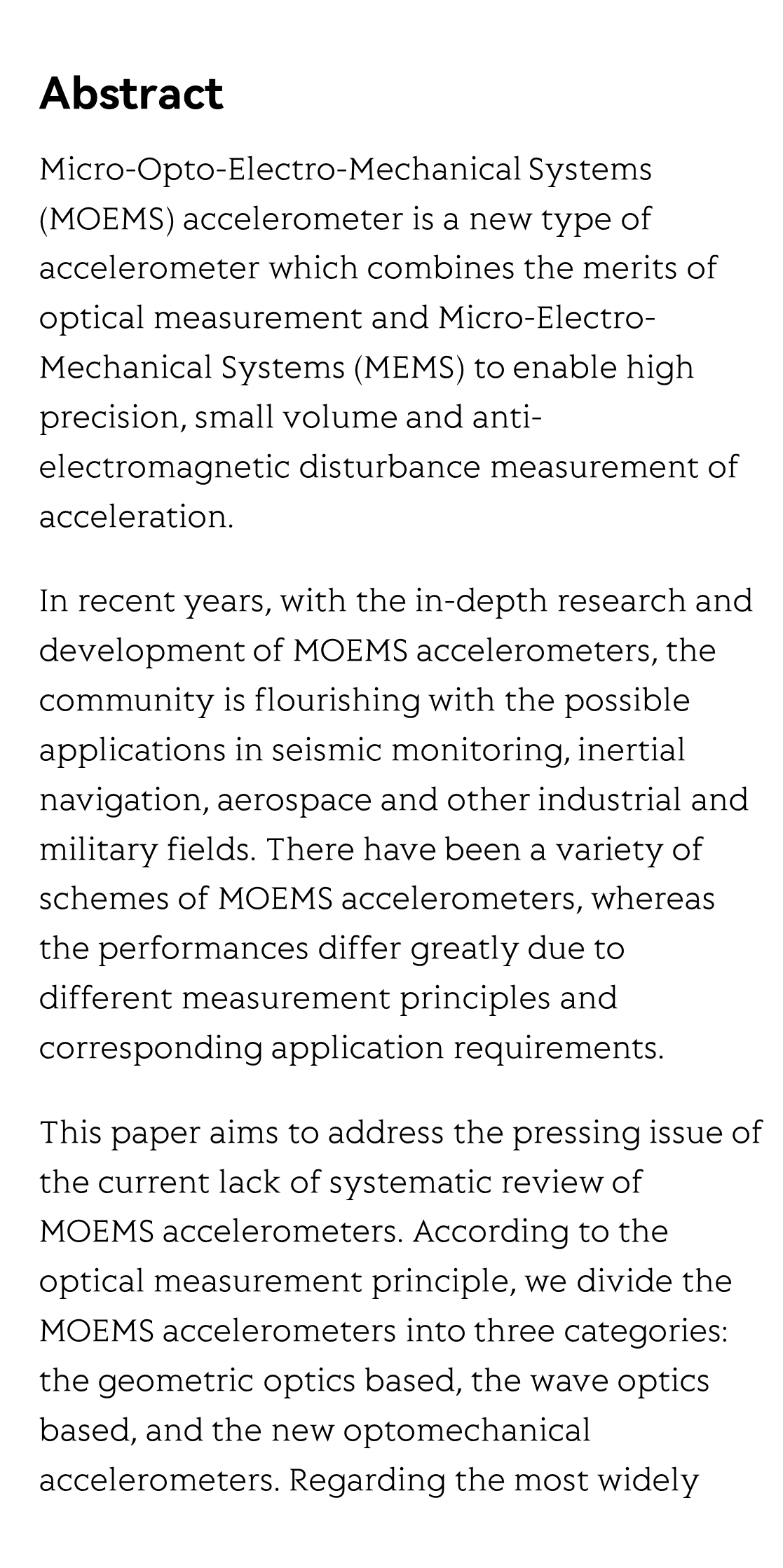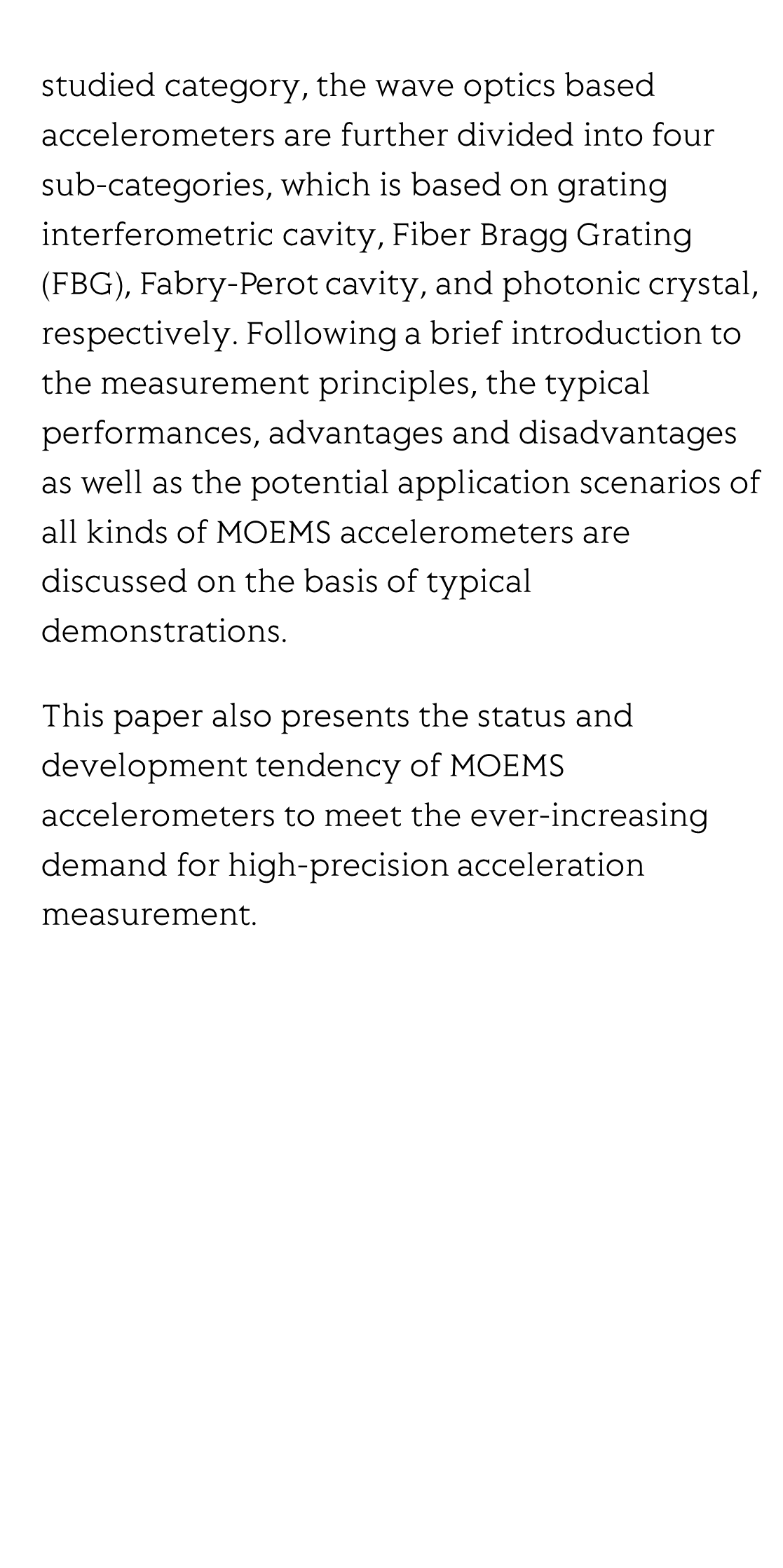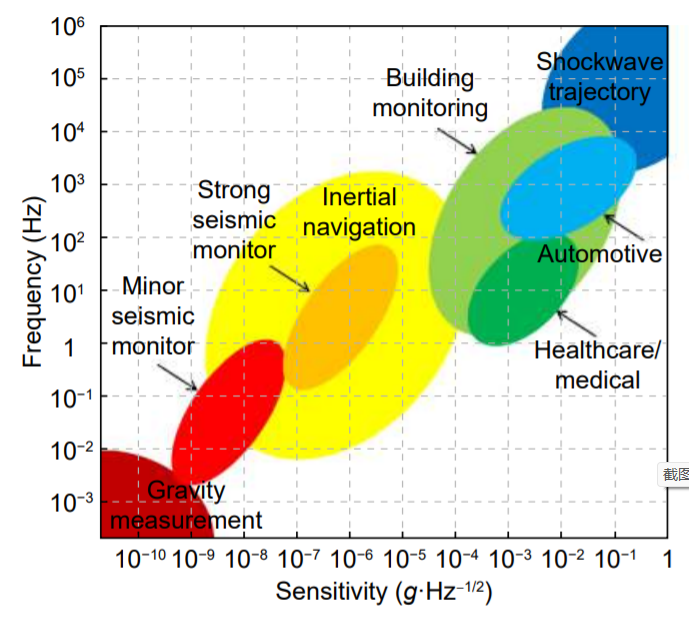(Peer-Reviewed) Review of micromachined optical accelerometers: from mg to sub-μg
Qianbo Lu 卢乾波 ¹ ², Yinan Wang 王逸男 ³, Xiaoxu Wang 王小旭 ³, Yuan Yao 姚远 ⁴, Xuewen Wang 王学文 ¹ ², Wei Huang 黄维 ¹ ²
¹ Frontiers Science Center for Flexible Electronics (FSCFE), Shaanxi Institute of Flexible Electronics (SIFE) & Shaanxi Institute of Biomedical Materials and Engineering (SIBME), Northwestern Polytechnical University, Xi'an 710072, China
中国 西安 西北工业大学 陕西柔性电子研究院 陕西生物医学材料与工程研究所 柔性电子前沿科学中心
² MIIT Key Laboratory of Flexible Electronics (KLoFE), Northwestern Polytechnical University, Xi,an 710072, China
中国 西安 西北工业大学 柔性电子材料与器件工业和信息化部重点实验室
³ The Key Laboratory of Information Fusion Technology, Ministry of Education, School of Automation, Northwestern Polytechnical University, Xi'an 710072, China
中国 西安 西北工业大学自动化学院 信息融合技术教育部重点实验室
⁴ Wuhan National Laboratory for Optoelectronics-Huazhong University of Science and Technology, Wuhan 430074, China
中国 武汉 华中科技大学 武汉光电国家实验室
Opto-Electronic Advances, 2021-03-25
Abstract
Micro-Opto-Electro-Mechanical Systems (MOEMS) accelerometer is a new type of accelerometer which combines the merits of optical measurement and Micro-Electro-Mechanical Systems (MEMS) to enable high precision, small volume and anti-electromagnetic disturbance measurement of acceleration.
In recent years, with the in-depth research and development of MOEMS accelerometers, the community is flourishing with the possible applications in seismic monitoring, inertial navigation, aerospace and other industrial and military fields. There have been a variety of schemes of MOEMS accelerometers, whereas the performances differ greatly due to different measurement principles and corresponding application requirements.
This paper aims to address the pressing issue of the current lack of systematic review of MOEMS accelerometers. According to the optical measurement principle, we divide the MOEMS accelerometers into three categories: the geometric optics based, the wave optics based, and the new optomechanical accelerometers. Regarding the most widely studied category, the wave optics based accelerometers are further divided into four sub-categories, which is based on grating interferometric cavity, Fiber Bragg Grating (FBG), Fabry-Perot cavity, and photonic crystal, respectively. Following a brief introduction to the measurement principles, the typical performances, advantages and disadvantages as well as the potential application scenarios of all kinds of MOEMS accelerometers are discussed on the basis of typical demonstrations.
This paper also presents the status and development tendency of MOEMS accelerometers to meet the ever-increasing demand for high-precision acceleration measurement.
Flicker minimization in power-saving displays enabled by measurement of difference in flexoelectric coefficients and displacement-current in positive dielectric anisotropy liquid crystals
Junho Jung, HaYoung Jung, GyuRi Choi, HanByeol Park, Sun-Mi Park, Ki-Sun Kwon, Heui-Seok Jin, Dong-Jin Lee, Hoon Jeong, JeongKi Park, Byeong Koo Kim, Seung Hee Lee, MinSu Kim
Opto-Electronic Advances
2025-09-25
Dual-frequency angular-multiplexed fringe projection profilometry with deep learning: breaking hardware limits for ultra-high-speed 3D imaging
Wenwu Chen, Yifan Liu, Shijie Feng, Wei Yin, Jiaming Qian, Yixuan Li, Hang Zhang, Maciej Trusiak, Malgorzata Kujawinska, Qian Chen, Chao Zuo
Opto-Electronic Advances
2025-09-25







